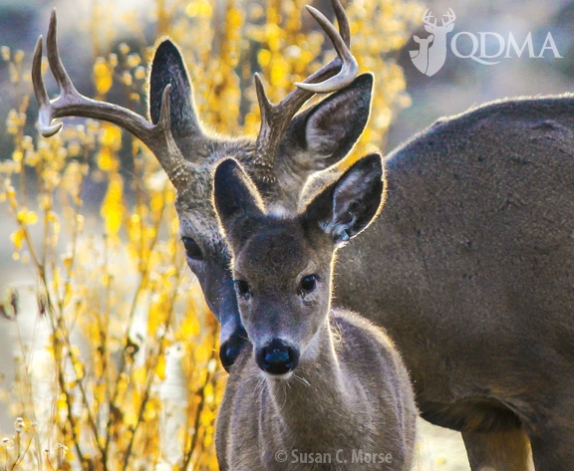
Since the percentage of doe fawns that breed is based on weight, not necessarily age, it is a good indicator of herd health, and you can monitor this index by checking the lactation status of any yearling does that are harvested. If you kill a doe this fall that is 1½ years old by the jawbone and has milk in its udder, it was bred as a fawn.
Deer herds with access to abundant high-quality forage and light to moderate winters can have breeding in more than 50 percent of their doe fawns. Conversely, deer herds exposed to poor habitat or severe winters often have less than 5 percent of their doe fawns reach the threshold weight and breed.
Doe fawn breeding rates vary widely across states. A 2010 QDMA survey showed less than 10 percent of doe fawns bred in Delaware, Idaho and South Carolina, while 70 percent of them bred in Iowa. This is testament to the mineral-rich soils and volume of agriculture in Iowa that provides abundant high-quality forage and allows fawns to grow rapidly. Amazingly, an estimated 10 percent of the doe fawns that bred in Iowa gave birth to twins. Even more amazing is that 21 percent of the doe fawns that bred in the farmland region of Ohio had twins!
Nationwide, an estimated 26 percent of doe fawns bred in 1998, and that average dropped slightly to 23 percent in 2008. However, since this index is so closely tied to a region’s habitat quality, it is difficult to lump the breeding rates across a region or even a state together. For example, in Pennsylvania an average of 25 percent of the doe fawns bred in 2008, but that percentage varied from 0 to 38 percent across the state’s wildlife management units (WMUs). Similar ranges occurred in Alabama (0 to 33 percent), New Hampshire (0 to 25 percent), South Dakota (0 to 58 percent), and Virginia (3 to 49 percent). These rates likely varied even more across specific properties within any WMU. This is one reason why collecting data from your location and using that to make site-specific harvest recommendations can benefit your Quality Deer Management program. Also, you can compare your data to WMU or state averages and assess how your QDM program measures up, and whether you have realistic expectations for what you can accomplish.
QDMA is the only conservation organization that monitors whitetail populations and herd health. Help us do more to track, encourage and protect whitetails: please become a QDMA member today. Your support is needed and appreciated!